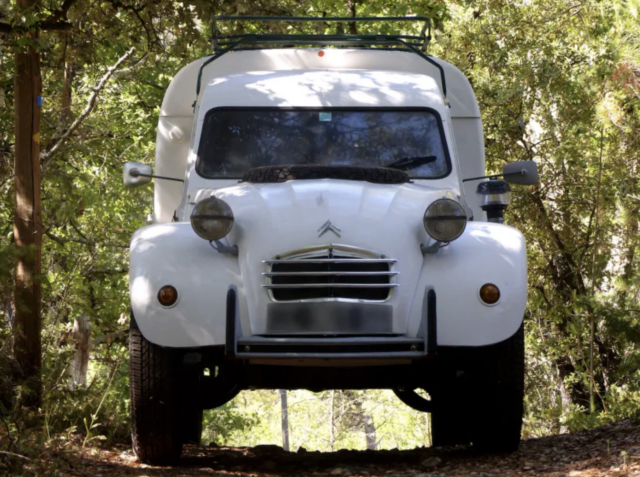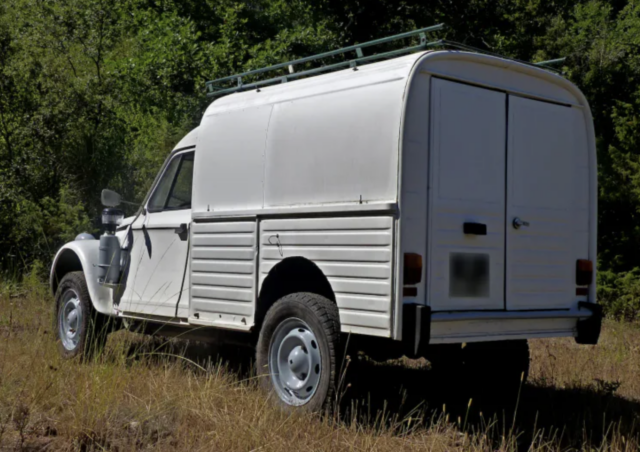The Citrëon 2CV is an automotive icon and a working-class hero. The initial concept was called the TPV and was conceived way back in 1936 with lead-engineer Pierre-Jules Boulanger requesting “an umbrella with four wheels.” In other words, a car that was simple above all else in the hope it would mobilize France’s rural communities who’d previously relied on horse-drawn wagons and bicycles for transport.
The plan was to showcase the PPV at the 1939 Paris Motor Show but the outbreak of war halted its debut. It wasn’t until the 1948 Paris Motor Show that a drastically redesigned and renamed “2CV” was unveiled. So why today does the “Tin Snail” have something of a cult following amongst the overlanding community? First and foremost, it was designed from the ground up to be field repairable by rural mechanics with limited machinery and is therefore a masterclass in mechanical simplicity. In addition, it weighs just 1,200-pounds (a stark comparison to the latest 7,001-pound overland ready Ram Power Wagon), which means it doesn’t need an array of all-terrain features or a huge engine to get out of trouble (a stiff breeze will move it along). It was also famously designed to carry a basket of eggs over a ploughed field so the ride is well suited to unpaved roads. Finally, thanks to the 2CV’s lightness the 425-cc two-cylinder engine is said to return more than 60 mpg when cruising at 30 mph. It was for these reasons and many more that Adventure 2CV chose the Citrëon for overlanding.

This film captures the very essence of overlanding as father and son explore the truly breathtaking and largely uninhabited landscapes of Mauritania, Africa, in their understated and modestly equipped 2CV 4WD. It’s quite simply overlanding perfection and a reminder of how little we need to travel the world. The trip kicks off with a demonstration of the Citrëon’s fabled simplicity as the duo seamlessly remove the engine and swaps the long gearbox (good for 50 mph) for a lower geared transmission that tops out at 34 mph for tackling the terrain ahead. They swiftly leave the tarmac and navigate shorelines, deep sand, epic dunes, mudflats, and more. Recoveries are plentiful with lots of insightful advice on the best techniques. The 2CV visits remote coastal villages, a nomad refuge, and the Cap Blanc lighthouse, and stumbles across gold minors, fishermen, desert wells, old train carriages, amazing wildlife, and much more.

If you’d like to follow Adventure 2CV I highly recommend checking out their website which details their long history of overland adventures. In addition, they have a second site that’s a wonderful resource for anyone looking to overland Mauritania with a list of must-see destinations, books, videos, GPS files, and historical and cultural info: mauritanie-au-gps.fr.
Our No Compromise Clause: We do not accept advertorial content or allow advertising to influence our coverage, and our contributors are guaranteed editorial independence. Overland International may earn a small commission from affiliate links included in this article. We appreciate your support.


